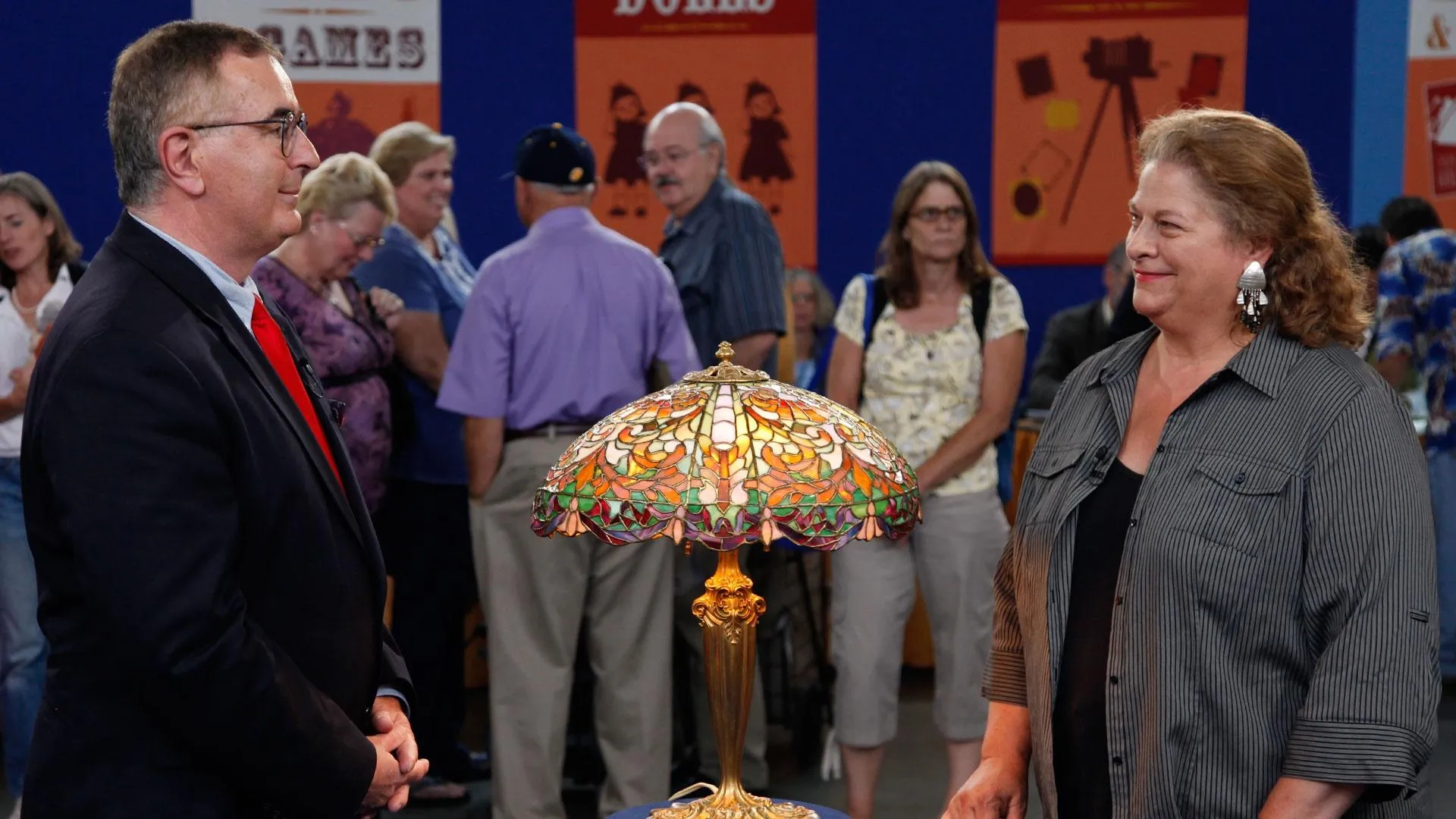APPRAISER: Where did you get them?
GUEST: From my great-great-grandfather. It's been passed down through the family from my grandmother.
APPRAISER: So, that would put it at the end of the Civil War, I think, wouldn't it?
GUEST: Yes.
APPRAISER: And what did he do? Where did he go to get them?
GUEST: He took a sailing ship to Alaska and he traded or bought them.
APPRAISER: Well, some of the things are from Alaska. They're Eskimo. First of all, these bird figures that are here, normally they're considered to be gaming pieces, but with the holes that are pierced in the back of them, I think they might have been fixtures on a hunting hat. When they would go hunting for the animals and things, quite often they would put images of the animals that they were hunting to give them good luck and things like that. We have some more Eskimo items as well. And all the Eskimo pieces are made from walrus ivory. This is really interesting. And it's got a wonderful old label from the time. It says they’re put on the feet to stop your slipping on the ice. So this is an early crampon. When people go climbing mountains and things these days, they put these iron spikes on their feet. And this is what the Eskimos would do to stop them from slipping around. This is a wonderful hook, also Eskimo. This is an extraordinary item. This is a bound figure, probably a slave. Now, I'm not sure what the function would be. This, again, might have been on one of the hats. But it's an extraordinary object, and full of power and everything else. Now, I'm not sure where he got the other things from because there are a couple of items here which come from the Pacific. I'm not sure, but I believe that this one is a black-lipped shell. And I think that probably came from Tahiti in the Pacific. This also. This is a wonderful fishhook. Very unusual having a stone shank on it. But the great object here is this piece in the middle. It's made out of walrus ivory and in fact it's an earring. This part here would have fitted into the large hole they would have had in the lobe. And on the end of it, sticking out is a tiki figure. The tiki was very central to the culture, both as a god and a human, in the Marquesas Islands. It's a wonderful group of objects. Given the patina and the wear on them, they could have been made anywhere up until the beginning of the 19th century. This little group here, I think probably about $5,000.
GUEST: Just for those?
APPRAISER: Just for those. These items here, interesting, not quite so valuable. This is about $500. This about $250, this about $250. There's been a real interest in collecting fishhooks over the last couple of years. And I would think this, being a rather unusual one, I think $1,500 would be a pretty good idea for that one.
GUEST: Whoa.
APPRAISER: This figure, I think in the region of $8,000 to $10,000.
GUEST: What?
APPRAISER: And this one probably $10,000 to $12,000. A retail price on this group would be in the region of about $26,000 to $28,000.
GUEST: Oh, my God. That is a lot of money.
APPRAISER: Do you like them?
GUEST: Yeah, I like them.
APPRAISER: They're quite wonderful.
GUEST: Especially since they're worth a lot of money.



